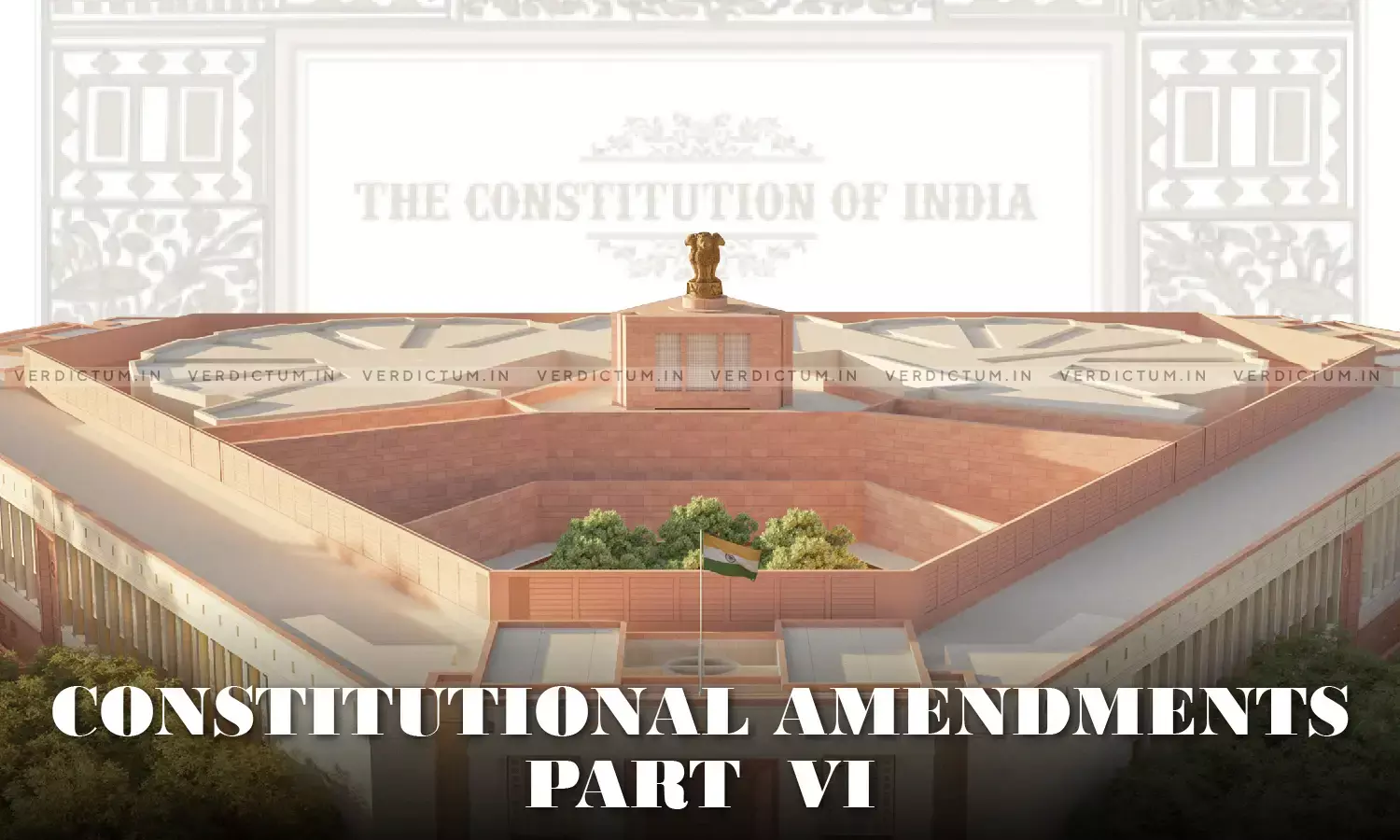Eighth Amendment And The Evolution Of Reservation Policies: Addressing Historical Injustice And Ensuring Equitable Representation
Part VI of a series.
Reservations in India were introduced to rectify the past and historical injustice against the backward classes and castes in India, to ensure that equal representation can be given to people belonging to different strata of society, and to provide an equal platform for everyone irrespective of their caste to promote and advance the backward classes.
When the 10 years, as originally envisaged in Article 334 of the Constitution, was set to expire, it was felt that the reservation needed to be continued in the interest of the Scheduled Castes, Scheduled Tribes, and Anglo-Indian communities. These communities must continue to have their voice in the legislature, as they have historically been silenced for a long time. Therefore, the Eight Constitutional Amendment extended the period from 10 years to 20 years.
Every 10 years, the provision was reviewed by Parliament, and after the Eight Amendment, it was further extended through the 24th Amendment, 45th Amendment, 62nd Amendment, 79th Amendment, 95th Amendment, and 104th Amendment of the Constitution. The Constitution was again amended, and the existing provision of reservation in favour of Scheduled Castes and Scheduled Tribes in the Lok Sabha and State Legislative Assemblies will continue.
Article 334 of the Constitution lays down the provisions relating to reserving seats for the Scheduled Castes and Scheduled Tribes, and the representation of the Anglo-Indian community by nomination in the House of the People and the Legislative Assemblies of the States. This provision was set to cease to have effect upon the expiration of a period of 10 years from the commencement of the Constitution.
Although the Scheduled Castes and Scheduled Tribes had made progress in the last 10 years, the reasons that waged with the Constituent Assembly in making provision for the aforesaid reservation of seats and nomination of members had not ceased to exist. It was therefore proposed to continue the reservation and the representation for a further period of 10 years.
In extending the period of nomination of members of the Anglo-Indian community, it was proposed to fix the number of such members who might be nominated by Governors to State Assemblies, and an amendment of Article 333 was accordingly proposed.
The Constitution (Eighth Amendment) Bill, 1959 was introduced in the Lok Sabha in 1959. It was introduced by Pandit Govind Ballabh Pant, who was then the Minister of Home Affairs and sought to amend Articles 333 and 334 of the Constitution.
The Constitution (Eighth Amendment) Bill, 1959 was introduced in the Lok Sabha on 16th November 1959. The bill sought to amend Articles 333 and 334 of the Constitution. The bill was considered by the Lok Sabha on 30th November and 1st December, and with the omission of clause 2, it was passed on 1st December 1959.
The bill, as passed by the Lok Sabha, was then considered and passed by the Rajya Sabha on 7th December 1959. During the consideration of the bill by the Lok Sabha, the motion for the adoption of Clause 2, which sought to amend Article 333 of the Constitution, was lost as it was not carried by a majority of the total membership of the House. The said clause was, therefore, omitted from the bill.
Clause 3 of the bill, seeking amendment of Article 334, was adopted in its original form by the Lok Sabha on 1st December 1959. It was then renumbered as clause 2 and adopted by the Rajya Sabha on 7th December 1959.
Part XVI of the Constitution makes special provisions relating to certain classes. Articles 330 to 334 in this part make provisions for reservation in favor of Scheduled Castes, Scheduled Tribes, and Anglo-Indians in the Lok Sabha and the State Legislative Assemblies. Article 334, as originally incorporated, provided that this reservation would cease after 10 years.
These provisions were incorporated to ensure that marginalized communities had a say in the common interest and that these communities were appropriately represented in the legislative bodies. By making these provisions, the Constitution framers had tried to address the centuries-old injustice meted out to these communities.
The bill, after ratification by the states, received assent from the then President, Dr. Rajendra Prasad, on 5th January 1960, and came into force on the same day. It was notified in the Gazette of India on 6th January 1960.
The reservation was initially meant for 10 years after the adoption of the Constitution in 1950. However, an extension of this reservation from time to time was considered to be a necessity to give these marginalized communities a better opportunity to participate in the political process and have their say in the legislative process.
Every constitution has some mechanism for alteration, whereby its provisions can be changed through the process of expansion, rectification, or revision, in order to suit the requirements of the present.
The framers of the Indian Constitution were aware that changes would be needed in the Constitution from time to time. Thus, the provisions for the Amendment of the Constitution were made to address the difficulties that may arise in the future.
The authors of the Constitution wanted to have a somewhat flexible Constitution, and they wanted to avoid extreme rigidity. They wanted to have a constitution that could develop with the developing nation, and which would change with the changing needs of the people of India.
The success of the Indian Constitution, for a country as diverse and complex as India, continues to intrigue, impress, and inspire experts around the world.
This is the sixth part of a series. The first part can be read here, the second part here, the third part here, the fourth here and the fifth here.
Author is an Advocate practicing in the High Court of Bombay.
[The opinions expressed in this article are those of the author. Verdictum does not assume any responsibility or liability for the contents of the article.]













